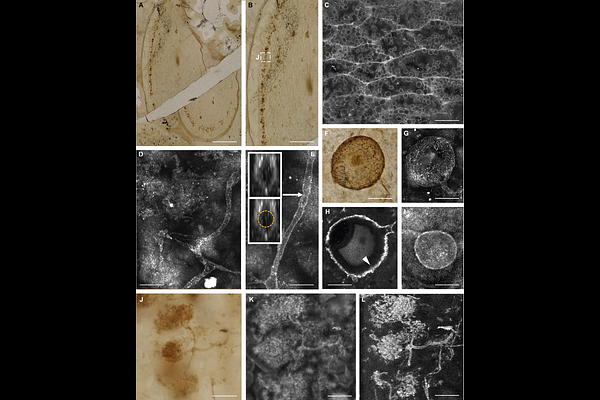An ancient plant symbiotic fungus with distinct features identified through advanced fluorescence and Raman imaging

An ancient plant symbiotic fungus with distinct features identified through advanced fluorescence and Raman imaging
Strullu-Derrien, C.; Wightman, R.; McDonnell, L. P.; Evans, G.; Fercoq, F.; Kenrick, P.; Ferrari, A. C.; Schornack, S.
AbstractMycorrhizal associations between fungi and plants are a fundamental aspect of terrestrial ecosystems. The occurrence of mycorrhizae is now well established in c. 85% of extant plants, yet the geological record of these associations is sparse. Fossil evidence from early Paleozoic terrestrial environments provides rare insights into these ancient symbioses, but imaging micro-scale fossil fungi in surrounding plant tissues is challenging. We employed brightfield microscopy, confocal laser scanning microscopy (CLSM), fluorescence lifetime imaging microscopy (FLIM), and Raman spectroscopy to investigate a newly identified endomycorrhizal fungus within a 407-million-year-old plant from the Windyfield Chert. An exquisite preservation and our advanced imaging approach enabled the description of the fungal structures to unprecedented detail. The fungus, Rugosomyces lavoisieriae gen. nov., & sp. nov., exhibits structural features resembling modern Glomeromycotina arbuscular mycorrhizal fungi. Combining CLSM with FLIM provides extra information by separating features based upon fluorescence lifetime. Raman spectroscopy indicates that fungal arbuscules and plant water-conducting cells have undergone geological alterations, resulting in a similar chemical composition. These findings enhance our understanding of ancient plant-fungal symbioses and demonstrate the potential of advanced imaging techniques in paleobotanical research.